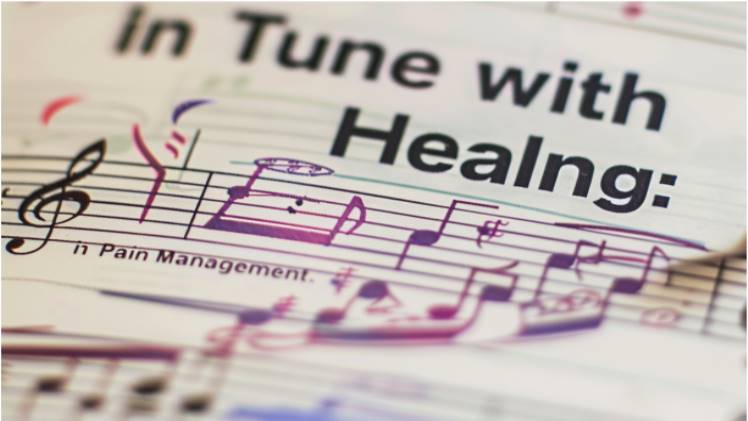Music Medicine: How Music Therapy Enhances Physical and Emotional Well-Being

Introduction
Are you familiar with the healing power of music? From lifting our spirits to calming our minds, music has an incredible ability to touch our souls. In recent years, the field of music therapy has gained recognition for harnessing this power to enhance physical and emotional well-being.
In this article, we will explore the transformative benefits of music therapy and how it can positively impact individuals of all ages and backgrounds. Whether you’re dealing with chronic pain, anxiety, or simply looking to improve your overall wellness, music therapy may offer an alternative approach to traditional methods.
Through the use of carefully selected music and various therapeutic techniques, music therapists work alongside their clients to achieve specific goals, such as reducing stress, improving communication skills, or managing pain. They create a safe and supportive environment where individuals can fully express themselves and connect with their emotions.
Join us as we delve into the world of music therapy and uncover the science behind its remarkable effects. Discover how this innovative approach can help you achieve physical and emotional well-being, one harmonious note at a time.
What is music therapy?
Music therapy is an evidence-based practice that utilizes music to address physical, emotional, cognitive, and social needs of individuals. It is facilitated by trained music therapists who use their expertise in both music and psychology to create personalized interventions. goltogel These interventions are tailored to each individual’s specific needs and goals, making music therapy a highly individualized form of treatment.
One of the distinguishing features of music therapy is that it is a non-verbal form of therapy. This means that individuals who may struggle with traditional talk therapy can still benefit from music therapy. Music has a universal language that can transcend barriers and reach deep within the soul. It allows individuals to express themselves, communicate, and connect with others on a profound level.
Music therapists are trained to assess the needs of their clients and develop treatment plans that incorporate various musical elements, such as rhythm, melody, and harmony. They may use instruments, singing, songwriting, or even movement to facilitate therapeutic experiences. The goal is to tap into the healing power of music and use it as a tool for growth, self-expression, and self-discovery.
The history of music therapy
The use of music as a healing tool dates back to ancient times. In ancient Greece, music was believed to have the power to heal the body and the soul. The Greek philosopher Plato recognized the therapeutic effects of music and wrote about its ability to restore harmony and balance.
However, it wasn’t until the 20th century that music therapy emerged as a formal discipline. The first music therapy program was established in the United States in the 1940s, during World War II. It was used to help veterans cope with physical and emotional trauma. Since then, music therapy has evolved and gained recognition as a valuable form of treatment in various healthcare and educational settings.
The science behind music therapy
While the healing power of music has been recognized for centuries, modern science is now shedding light on the mechanisms behind its therapeutic effects. Research has shown that music can stimulate the release of endorphins, which are natural painkillers and mood enhancers. It can also activate the reward centers in the brain, leading to feelings of pleasure and well-being.
Music therapy has been found to have a positive impact on our physiological responses. It can lower blood pressure, heart rate, and cortisol levels, which are indicators of stress. It can also improve immune function and enhance the production of antibodies, helping to strengthen our immune system.
In addition to its physical effects, music therapy also has a profound impact on our emotional well-being. Listening to music can evoke strong emotions and memories, allowing individuals to process and explore their feelings in a safe and supportive environment. It can provide a sense of comfort, reduce anxiety, and promote relaxation.
Benefits of music therapy for physical health

Music therapy has been shown to have numerous benefits for physical health. It can help to reduce pain and alleviate symptoms associated with chronic conditions. For example, individuals with fibromyalgia, a condition characterized by widespread pain, have reported a decrease in pain intensity and an improvement in overall well-being after participating in music therapy sessions.
Music therapy has also been found to improve motor function in individuals with neurological disorders, such as Parkinson’s disease or stroke. It can help to enhance coordination, balance, and muscle control. By incorporating rhythmic patterns and movement into the therapy sessions, music therapists can stimulate neural pathways and promote neuroplasticity.
Furthermore, music therapy can aid in rehabilitation and recovery after surgery or injury. It can assist individuals in regaining strength, mobility, and independence. Listening to music or playing instruments can also distract from pain and provide a sense of empowerment and accomplishment.
Benefits of music therapy for mental health
In addition to its physical benefits, music therapy is highly effective in promoting mental health and well-being. It can reduce symptoms of anxiety, depression, and stress. Listening to calming music or engaging in musical activities can activate the relaxation response in the body, leading to a decrease in cortisol levels and an increase in feelings of calm and tranquility.
Music therapy can also improve cognitive function and enhance memory and attention. It has been found to be particularly beneficial for individuals with dementia or Alzheimer’s disease. The familiar melodies and lyrics can evoke memories and emotions, stimulating cognitive processes and improving communication.
Furthermore, music therapy can boost self-esteem and self-confidence. Engaging in musical activities and expressing oneself through music can foster a sense of accomplishment and empowerment. It can also provide individuals with a creative outlet for self-expression and help them connect with their inner selves.
How music therapy is used in different settings
Music therapy is a versatile form of treatment that can be used in various settings, including hospitals, schools, nursing homes, and mental health facilities. In hospitals, music therapy is often used to reduce pain, anxiety, and stress in patients undergoing medical procedures or treatments. It can provide a sense of comfort and distraction, making the hospital experience more bearable.
In schools, music therapy is utilized to support the educational and social development of students. It can help children with special needs to improve communication skills, enhance social interactions, and manage behavioral challenges. Music therapy can also be integrated into the curriculum to enhance learning and creativity.
In nursing homes and assisted living facilities, music therapy can improve the quality of life for older adults. It can promote socialization, stimulate memories, and provide a sense of purpose and meaning. Music therapy sessions can be tailored to the individual preferences and abilities of each resident, ensuring a personalized and meaningful experience.
In mental health facilities, music therapy is used to address a wide range of mental health issues, including depression, anxiety, and trauma. It can provide individuals with a safe and non-threatening outlet for expressing their emotions and processing their experiences. Music therapy can be used in both individual and group settings, fostering a sense of community and support.
Music therapy techniques and interventions
Music therapists employ a variety of techniques and interventions to achieve therapeutic goals. These techniques may include active music-making, such as playing instruments or singing, or receptive music-listening, where individuals listen to carefully selected music. The choice of techniques depends on the needs and preferences of each individual.
Improvisation is a common technique used in music therapy. It allows individuals to freely express themselves through music, without the need for prior musical training or skills. Improvisation can be a powerful tool for self-expression and emotional release, as it allows individuals to connect with their inner selves and express their thoughts and feelings in a non-verbal way.
Songwriting is another popular intervention in music therapy. It allows individuals to create their own songs, lyrics, and melodies, reflecting their personal experiences and emotions. Songwriting can be a cathartic process, providing individuals with a means to express their thoughts and feelings in a creative and meaningful way.
Guided imagery is often incorporated into music therapy sessions. It involves using music to create a mental image or story, allowing individuals to relax, visualize positive experiences, and engage their imagination. Guided imagery can be a powerful tool for reducing stress, promoting relaxation, and enhancing self-awareness.
Music therapy and pain management
One area where music therapy has shown remarkable results is in the management of pain. Music has the ability to distract individuals from pain and reduce their perception of discomfort. It can also trigger the release of endorphins, which are natural painkillers produced by the body.
Music therapy can be particularly beneficial for individuals with chronic pain conditions, such as fibromyalgia or arthritis. It can provide a non-pharmacological approach to pain management, reducing the reliance on medication and its potential side effects. By incorporating music into their daily routine, individuals can experience long-term pain relief and an improvement in their overall quality of life.
How to become a music therapist
If you are passionate about music and helping others, a career in music therapy may be a perfect fit for you. To become a music therapist, you will need to complete a bachelor’s degree in music therapy from an accredited university or college. This program will provide you with the necessary knowledge and skills in both music and psychology.
After completing your degree, you will need to pass the certification exam administered by the Certification Board for Music Therapists (CBMT). This exam assesses your knowledge and competency in music therapy practice. Once you have obtained your certification, you will be eligible to practice as a music therapist and work with individuals of all ages and backgrounds.
Music therapy offers a rewarding and fulfilling career path, where you can make a positive impact on the lives of others through the power of music. It combines your passion for music with the opportunity to help individuals achieve physical and emotional well-being.
Conclusion
Music therapy is a powerful form of treatment that harnesses the healing power of music to enhance physical and emotional well-being. It offers a unique and individualized approach to therapy, where individuals can fully express themselves and connect with their emotions. Through carefully selected music and various therapeutic techniques, music therapists work alongside their clients to achieve specific goals and improve overall wellness.
The benefits of music therapy are backed by science, with research showing its positive effects on physical and mental health. From reducing pain and anxiety to improving cognitive function and self-esteem, music therapy has the potential to transform lives.
Whether you’re dealing with a chronic condition, struggling with mental health issues, or simply looking to improve your overall well-being, music therapy may offer a holistic and alternative approach to traditional methods. So why not give it a try? Let the power of music heal and uplift your soul, one harmonious note at a time.



